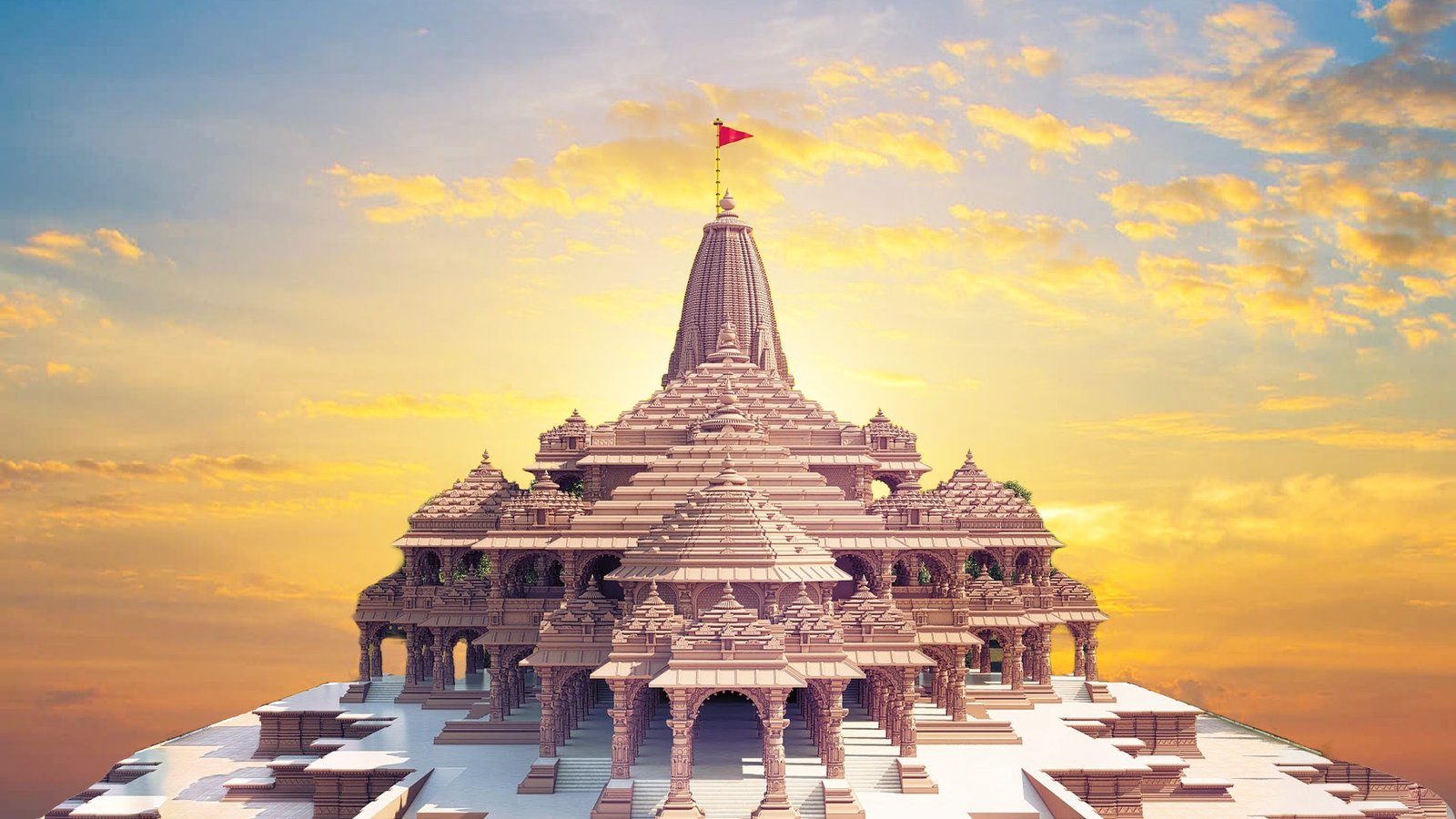Ayodhya, located on the banks of the Sarayu River in Uttar Pradesh, is one of the seven most sacred cities in Hinduism. Ayodhya tourist places attract pilgrims, history enthusiasts, and cultural travelers alike, offering a harmonious blend of devotion, architecture, and heritage. Revered as the birthplace of Lord Rama, Ayodhya is not only a spiritual epicenter but also a treasure trove of temples, ghats, and historical landmarks.
Whether you’re seeking divine blessings, exploring ancient legends, or simply soaking in the serene ambiance of this holy city, Ayodhya promises a journey that is both soul-stirring and visually captivating.
🛕 1. Ram Janmabhoomi Temple
- Significance: Believed to be the exact birthplace of Lord Rama.
- Highlights:
- The newly constructed Ram Mandir, a grand architectural marvel.
- Intricate carvings, spiritual ambiance, and daily rituals.
- A magnet for pilgrims and tourists from across the globe.
Experience: Witness the spiritual energy of the site, attend the aarti, and explore the temple complex that symbolizes faith and unity.
🛕 2. Hanuman Garhi
- Significance: A fortress-like temple dedicated to Lord Hanuman, protector of Ayodhya.
- Features:
- 76 steps leading to the shrine.
- A golden idol of Hanuman in a seated posture.
- Panoramic views of Ayodhya from the top.
Experience: Climb the steps, offer prayers, and enjoy the vibrant atmosphere filled with chants and devotion.
🛕 3. Kanak Bhawan
- Significance: A palace gifted to Sita by Queen Kaikeyi after her marriage to Rama.
- Highlights:
- Ornate architecture with colorful murals and idols of Rama and Sita.
- Peaceful courtyard and devotional music.
Experience: Admire the regal interiors and feel the warmth of divine love in this beautifully maintained temple.
🛕 4. Nageshwarnath Temple
- Significance: Dedicated to Lord Shiva, believed to be built by Kush, son of Rama.
- Features:
- Ancient architecture with spiritual significance.
- Celebrated during Shivratri with grand festivities.
Experience: Participate in rituals and explore the temple’s historical roots.
🛕 5. Dashrath Bhavan
- Significance: Believed to be the royal residence of King Dashrath, father of Rama.
- Highlights:
- Traditional architecture and spiritual ambiance.
- Daily bhajans and religious discourses.
Experience: Immerse yourself in the Ramayana era and witness the legacy of Ayodhya’s royal lineage.
🛕 6. Sita Ki Rasoi
- Significance: A symbolic kitchen believed to be used by Sita.
- Features:
- Small temple with kitchen utensils on display.
- Adjacent to Ram Janmabhoomi complex.
Experience: Reflect on the simplicity and devotion of Sita’s life.
🌊 7. Ram Ki Paidi
- Significance: A series of ghats along the Sarayu River used for bathing and rituals.
- Highlights:
- Scenic views, especially during sunrise and sunset.
- Venue for Deepotsav and other festivals.
Experience: Take a holy dip, enjoy boat rides, and witness the mesmerizing evening aarti.
🕌 8. Gulab Bari
- Significance: A Mughal-era garden and tomb complex.
- Features:
- Tomb of Nawab Shuja-ud-Daula.
- Lush gardens and Islamic architecture.
Experience: Explore the cultural diversity of Ayodhya through its historical monuments.
🕌 9. Raja Mandir
- Significance: A temple complex with idols of various deities.
- Features:
- Located on the banks of Sarayu.
- Popular among devotees and tourists.
Experience: Attend rituals and enjoy the peaceful riverfront setting.
🕌 10. Treta Ke Thakur
- Significance: Marks the spot where Rama performed Ashwamedha Yagna.
- Features:
- Ancient idols carved from a single stone.
- Celebrated during Kartik Purnima.
Experience: Visit during festivals for a spiritually charged experience.
🛕 11. Valmiki Ramayan Bhavan
- Significance: Dedicated to Maharishi Valmiki, author of the Ramayana.
- Features:
- Ramayana inscriptions and spiritual exhibits.
- Peaceful meditation spaces.
Experience: Learn about the epic and its philosophical teachings.
🎉 12. Ayodhya Deepotsav
- Event: Annual festival celebrating Diwali with millions of diyas.
- Highlights:
- Guinness World Record for most lamps lit.
- Cultural performances, laser shows, and fireworks.
Experience: Visit during Deepotsav for a once-in-a-lifetime spectacle of light and devotion.
🧭 Travel Tips for Ayodhya
- Best Time to Visit: October to March for pleasant weather and festival season.
- How to Reach:
- Nearest Airport: Ayodhya International Airport (under development), currently Lucknow Airport.
- Rail: Ayodhya Junction and Faizabad Junction.
- Road: Well-connected via NH27 and NH330.
- Stay Options: Budget lodges, dharamshalas, and mid-range hotels near Ram Janmabhoomi and Hanuman Garhi.
🛍️ Local Experiences and Souvenirs
- Shopping: Religious artifacts, Ramayana-themed souvenirs, and handcrafted items.
- Cuisine: Vegetarian fare, street food like kachori-sabzi, and temple prasad.
- Cultural Walks: Guided tours through temples, ghats, and historical sites.
Ayodhya tourist places offer more than sightseeing—they offer a spiritual awakening and a deep dive into India’s epic heritage. Whether you’re chanting at Hanuman Garhi, meditating by the Sarayu, or exploring the grandeur of Ram Mandir, Ayodhya leaves you with a sense of peace, devotion, and timeless connection.


